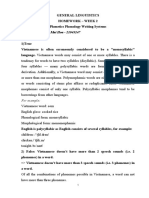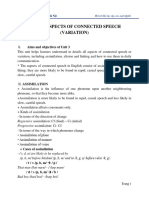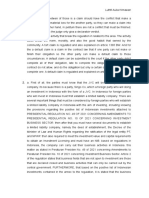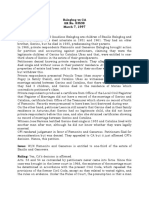Unit 7: Survival
LOOKING FOR BEAUTY IN DECAY
Go on a tour of Detroit’s ruined buildings with journalist Elspeth Thompson.
The rapid growth of Detroit as the automobile capital of the world in the first half of the twentieth century made
it a very significant city. Art deco skyscrapers, luxury hotels and impressive theatres were built to accommodate
its growth as well as demonstrate its wealth. It was a time of huge investment, which did not last.
1. ______
C
The decline of the city meant grand buildings of the early twentieth century were abandoned. When the city was
going through bankruptcy in 2013-14, its urban decay made headlines. People who had seen the news wanted to
see it for themselves, in the same way that visitors to Italy want to see the volcanic destruction of Pompeii.
2. ______
G
It is this destruction of ideological hopes that has brought me here one Sunday in May, on a tour of an old hotel.
Along with a group of nine others, I would like to see the decay up close and reflect on what it all means. So, here
I am, armed with my camera, ready to make my way through the side entrance of the building.
3. ______
E
Next, we walk down a corridor and go through a set of faded doors. We are now standing in what looks like a
once grand dining room. The high ceilings are still colourful in places and they are incredibly ornate. However,
thanks to neglect, the ceiling and walls are crumbling and there is concrete all over the fioor, as well as wood and
old items of furniture.
4. ______
A
Yet, this has not deterred the people on the tour today. We take photos and admire the workmanship, materials
and money that must have gone into the building all those decades ago. We find the beauty among the dirt and
graffiti. It might sound surprising, but it isn’t hard.
5. ______
F
I start to get annoyed myself. I’m angry at the way the building has been left to collapse. A fellow tour participant
tells me of the first time he felt this way on a tour. ‘I’m standing in this beautiful old theatre looking at this
exquisite architecture,’ he says, and I notice a huge piece of ornate ceiling which has fallen to the floor and I
realise that no one cares.’
6. ______
D
In a similar spirit, the David Whitney Building, a skyscraper in the downtown area of the city, was renovated in
2014 and now comprises a boutique hotel and luxury residences. The building’s website describes it as The
grandeur of Detroit’s past. The promise of its future’. Let’s hope projects like these lead to more people seeing
the city’s true beauty.
(from Gold Experience B2+)
�Complete the text with the following paragraph
A. Debris like this makes urban exploration physically dangerous. In addition, we could be fined for
trespassing, which is why all tour participants are required to sign a form to say they take full responsibility
for their actions.
B. Due to increased competition in the motor industry, the demand for workers in Detroit began to fall. Unlike
New York, people in Detroit chose to live out in the suburbs, which resulted in a city spread far and wide
that affected people’s abilities to find work near home
C. The locals believe that if less time were spent talking about Detroit's historical past and more time on the
potential of its future than it would be much easier to attract investment from outside sources. Although
others do acknowledge that its history is something that can be built upon.
D. However, it turns out that people do have an interest in preserving Detroit’s history, even though it may
not always feel like it. A grand, old theatre, currently used as a car park, will soon be renovated. While the
new owners will use it for big events, not plays, the ornate ceiling will be protected.
E. It is certainly not an easy task, and we all have to crawl on our hands and knees but once in, we stand up
straight. It appears to be pitch black at first, but our eyes soon adjust to the lack of light and we start to
take in the scenery around us.
F. Despite this comparison, the two situations are different as Detroit's problems are man-made. The ruined
buildings here represent the best of human innovation and craftsmanship, not to mention the worst of
human greed. They also represent the dreams of all those who travelled to the area to find work in the
mid-1900s.
G. Nevertheless, not everyone has this same desire to explore the buildings in this way. Many locals feel
frustrated that the buildings focus on their negative past and not the positive potential of their future.






























































































